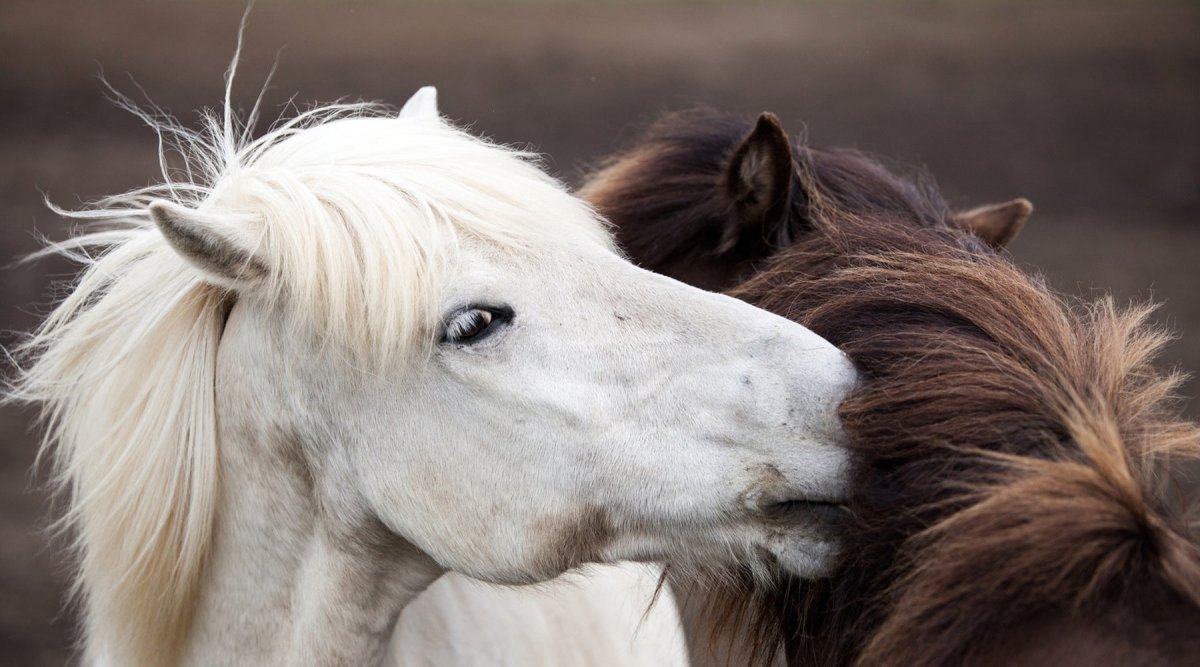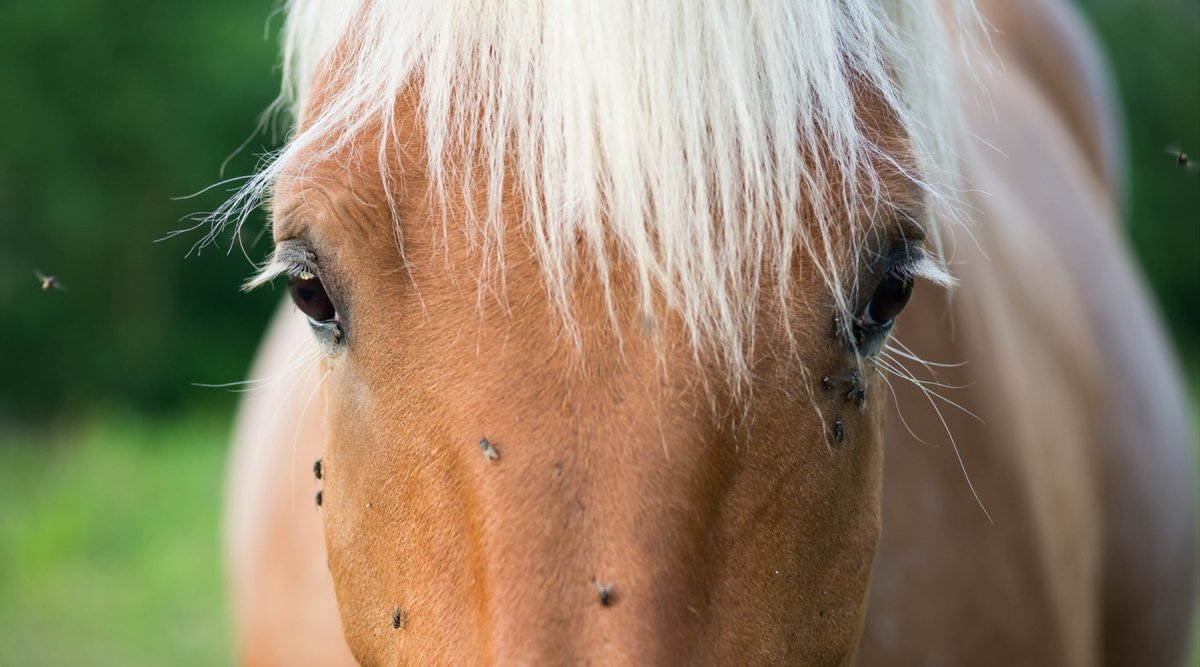The hormonal change in horses begins as early as January and the body prepares for the change of coat. What many horse owners do not know is that the change of coat in horses depends not only on the temperature, but is also influenced by daylight. Unfortunately, this means that the animals are not nutritionally prepared early enough for the change of coat and can develop deficiency symptoms.
In this article, you can find out exactly how the shedding process works and how you can provide your animal with the best possible support.
Why do horses change their coat?
After December 21, when the shortest day of the year is over, the length of the days increases steadily. This is also registered by the pineal gland, a hormonal gland attached to your horse's brain. This gland produces the hormone melatonin, which is responsible for the biorhythm, among other things, and controls your animal's coat change as well as its reproduction and sleep-wake rhythm. As soon as the days get longer, the pineal gland gives your horse's body the signal for the start of the spring coat change.
Temperatures determine the change of coat in that the change of coat is suspended in the event of a sudden cold snap. This is a protective function of the organism to prevent the coat from falling out too quickly if your horse still needs the warmth in an unexpectedly cold spring. Both daylight and temperature influence the density and length of the coat. You can observe that horses in open stables have a thicker and longer coat than box horses. Ponies also develop a longer coat than warm-blooded or thoroughbred horses.
The difference between fall and spring coat changes
Although horses change their coat twice a year, there are clear differences between the two shedding seasons. In the fall, your horse often sheds its short, smooth summer hair within a few days or weeks and replaces it with short winter hair. By December, these hairs become longer and a two-layered coat of long top hairs and plush undercoats forms.
In spring, on the other hand, horse owners struggle for weeks with their horse's hair. This is because the long winter coat is only gradually shed. First the long top coat is shed, then the thick undercoat gradually sheds and finally the thinner summer coat appears. It is therefore not surprising that some horses have a (slightly) different coat coloration in summer than in winter, as they shed their entire coat with the exception of their mane, tail and tactile hairs.
Depending on the horse and temperatures, shedding takes around three months and requires a lot of energy from your horse. Some animals lose a lot of weight during this time. If you notice that your horse is less willing to walk or unmotivated for training and work, this is completely normal. Many animals appear listless and dull due to the strenuous, natural process. You should take this into account in your training plan. Always keep in mind that the horse's organism is at its peak performance during the coat change.

The right support for horses during the spring coat change
Brushing
No horse owner can avoid intensive coat care during the transition period. As the dead hair is itchy, horses often try to scrub or roll around. You can help your animal by making it easier for it to shed with a slightly coarser brush. Coat scrapers or grooming brushes, which are available in various designs, can also help by removing dead hairs with their short-toothed blades. You should use a soft brush for your pet's head area.
Protection from colds
The transition period from winter coat to summer coat as well as temperature fluctuations challenge the horse's immune system and it becomes more susceptible to colds. If an animal has lost little winter coat on a particularly warm spring day, for example, it will sweat profusely, whereas at night when temperatures are low it can benefit from the remaining winter coat. Your horse has to use a lot of energy to compensate for these temperature differences. The immune and circulatory systems are therefore under a lot of strain and need an extra portion of nutrients. Rosehips are ideal for boosting your animal's immune system: they contain up to 23 times more vitamin C than lemons and the valuable galactolipids, which have proven effective for joint problems.
Another way to protect against colds is to dry the coat after training. If your horse's coat is long, it is advisable to let it dry well after training. Another option is to cover the animal with a sweat rug.
Care through correct feeding
To ensure your animal's energy supply, it needs to be provided with high-quality proteins, trace elements, minerals, vitamins and fatty acids. You can therefore ideally support your horse through its feed during the coat change. Important nutrients include zinc, copper, manganese, selenium and the essential omega 3 & 6 fatty acids, which are found in salmon oil in particular. Biotin and folic acid, which belong to the important family of B vitamins, are also essential for the regeneration of hair and skin.
Make sure that the feed is natural. Synthetic mineral mixtures have to be metabolized by the body and also stimulate the organism. Natural nutrients, on the other hand, can be better recognized and absorbed by the body. We are talking here about better bioavailability.
For a balanced supply of the minerals mentioned, we recommend feeding pure brewer's yeast, for example. Diatomaceous earth is also useful as it contributes to the supply of silicon. Silicon is involved in the development of a shiny and strong coat and also supports horn development and thus the hooves. To cover the supply of omega 3 fatty acids and make the coat shine, salmon oil is the first choice. Linseed oil or hemp oil are also suitable. You should dose slowly and carefully if your horse is not used to oily food. This is a good way to test tolerance.
During the shedding period, the horse also needs more protein to build up the new hair. Protein-rich feed can also help here.
Special herbs can be very helpful to positively influence the enormous performance of the metabolism. Dandelion and nettle herb are eaten by many horses, have a natural stimulating effect on the metabolism and also strengthen the liver and kidneys.
A balanced diet is essential to help your horse change its coat and relieve its metabolism.
Pay particular attention to old and sick horses
A healthy horse that is fed a balanced diet will cope well with the extra workload during the coat change. If your horse is old or already has metabolic problems, the shedding period is an additional burden. These animals can lose weight, appear exhausted and dull or develop other secondary diseases. To avoid this, you should adjust the amount of feed accordingly.
During the transition period, you can often recognize so-called "starvation hair" on your horse. They differ from real winter coats in that they stand out clearly from the normal coat and are also straw-like and hard. These hairs are a sign that your horse's metabolism needs intensive support.
If you notice that your horse is still wearing its winter coat well into the warmer months and is generally struggling to shed, you should consult a veterinary practitioner or vet. In such cases, there is a metabolic disorder that should be treated.


